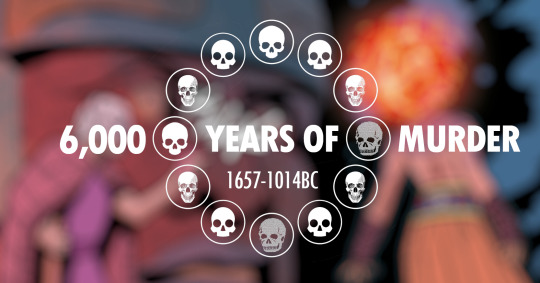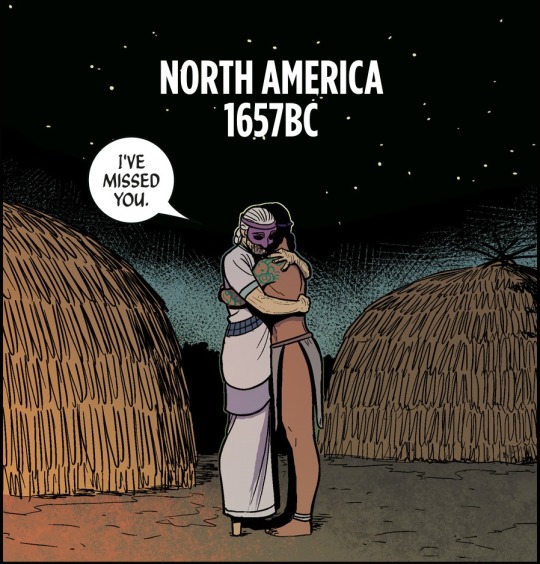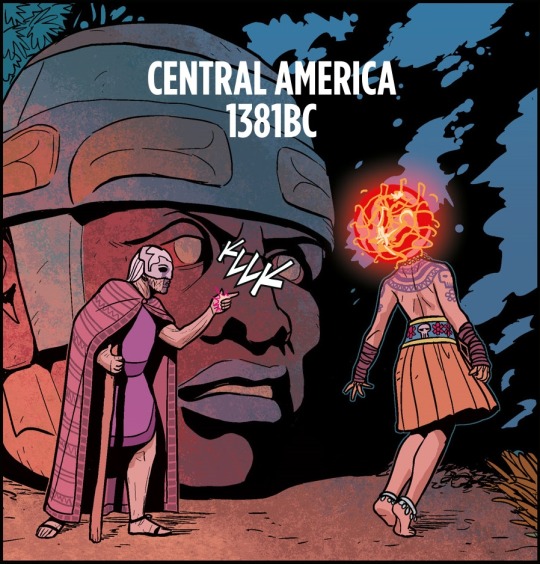#'EGYPT also CHINA also INDUS RIVER VALLEY' *list of civilizations being mesopotamia egypt china indus river valley & now norte chico 'NORTE
Text
before i had star wars bad lip reading stuck in my head, now i have the jingles from history of the entire world, i guess stuck in my head
#'THE SUN IS A DEADLY LASER' 'not anymore there's a blanket'#'something's alive in the ocean'#'it's a bird it's a plane it's the seljuk turks'#'EGYPT also CHINA also INDUS RIVER VALLEY' *list of civilizations being mesopotamia egypt china indus river valley & now norte chico 'NORTE#CHICO'#'merchants probably. and they've got SPICES'#'AFRICA'#'taste the sun'#'space dust' 'EVEN CRAZIER SPACE DUST'#'china just made a ROAD TO THE WORLD'#'is loving jesus legal yet?'#'IT'S THE ISLAMIC GOLDEN AGE'#'SOCIETY'#'the mayans have FIGURED OUT THE STARS'#liv won't shut up#history of the entire world i guess#'time to conquer all of india. or most of india.'#'NEW ARRIVALS IN INDIA. maybe they're those horse people i was talking about or their cousins or something. & they brought hymns and#mantras and stuff'#'sike they both get angrier'#'THAT'S LAND'#'bye bye ocean'
3 notes
·
View notes
Text
6,000 Years of Murder – Part Four: There Goes the Neighbourhood

Tim: The Wicked + The Divine #36 finally gave us a definitive list of every damn Recurrence that has occurred since Ananke first started exploding heads, so we thought we’d take a walk through the annals of history and provide some context for what was happening at the time. Welcome to 6,000 Years of Murder.
In this entry, we hit the halfway mark in our voyage through history, as we found a modern religion, celebrate the most baller of all the Pharaohs and watch thousands of years of progress get flushed into the Mediterranean Sea...

1657BC – North America
It’s time for another one of our rare pre-Columbian trips to North America, and around this point, that means we’re probably in the area of modern-day Louisiana, checking out some mounds. The Poverty Point culture (an unfortunate name, but historians are a cruel and unusual lot) were a group of indigenous peoples who occupied the lower Mississippi Valley from around 2200BC to 700BC, building settlements in over a hundred sites and creating a large trading network throughout what is now the eastern United States. Mainly hunter-gatherers, they are descended from the tribes that passed through Wrangel Island and down into the continental US.
This time would have been the peak of Poverty Point culture, with work on their eponymous largest settlement just beginning. It would go on to take up 910 acres, and has been described as the “largest and most complex Late Archaic earthwork occupation and ceremonial site found in North America”. Exactly what Poverty Point was used for is heavily debated – some think it was a settlement or trading centre, while others point to its concentric rings of semi-circular mounds as suggesting a ceremonial function.

1565BC – Northern China
Our last trip to Northern China saw the Xia dynasty emerging around Erlitou and the Yellow River. As we check back in, the Xia are on their way out, about to be replaced by the Shang dynasty, who will rule for around 600 years. The Shang provide us with some of our first examples of Chinese writing, and oversaw several important developments, including large-scale production of bronze; a foundation of a powerful standing military; artistic works in jade, bone and ceramic; and the construction of large walled palace complexes.
The Shang are the earliest dynasty we have concrete archaeological evidence for, with earlier dynasties existing in the weird space between oral history and folklore. Not only do we have evidence, but we have accounts of the Shang in classic Chinese literature like the Book of Documents, the Bamboo Annals and the Records of the Great Historians (although these were all written at least 1,000 years later). Sidenote: the Chinese remain great at naming things.

1473BC – Northern Indus Valley
Our old friend the Indus Valley Civilisation is no more, I’m afraid. It dissipated around 200 years back, when consistent drought and aridification made agriculture more difficult, and urban settlements became harder to support. As it broke up, the people of the Indus Valley Civilisation scattered. Many headed east, while others remained, mingling with incoming Indo-European and Indo-Iranian tribes. For the next 1,000 years or so, the Indus Valley will return to a more tribal, pastoral model without a strong urban centre.
However, who needs an urban centre when you’ve got RELIGION?! Not just any religion, either – this time is known as the Vedic period, because it’s when the four central texts of Hinduism will be written, starting around this time with the Rigveda, a collection of 1,028 Sanskit hymns and 10,600 verses. Discussing cosmology, the nature of god and the virtues of charity, the Rigveda is one of the oldest extant texts in any Indo-European language, and a cornerstone of a religion that boasts 1.15bn followers today. If we’re trying to correlate Persephone fighting back with particularly momentous periods in history, the Vedic period – despite being largely pastoral – certainly qualifies.

1381BC – Central America
It’s Central America. There’s a big head in the background. It must be OLMEC TIME. One of the earliest known major civilisations in Mesoamerica, the Olmecs were found in the tropical lowlands of south-central Mexico, in the modern-day states of Veracruz and Tabasco, between 1500BC and around 400BC. As the first major culture to emerge in the area, the Olmecs sort of set the template for civilisations that would follow in the area, and while that template included a complex writing system, the concept of zero, advanced calendars and a great ballgame, it also involved ritual bloodletting and, quite possibly, human sacrifice.
Let’s talk about the big heads. No known pre-Columbian texts explain their origin or purpose, and while only 17 have been unearthed to date, they have become a well-recognised symbol of the Olmecs. Once theorised to be popular ballplayers, they are now generally accepted to be portraits of rulers, although possibly dressed as ballplayers, like when Putin rides around shirtless on a horse. No two heads are alike, and they were carved from huge single blocks or boulders of volcanic basalt, with the finished products ranging in size from 4'10″ to 11' tall. Those are some big-ass heads.

1289BC – Egypt
Oh Egypt, we couldn’t stay away too long, especially when you’ve been so busy. The Middle Kingdom is long over and it’s time for the New Kingdom. See if you can recognise some of the names that have come and gone while we were away. Amenhotep. Nefertiti. Tutankhamen. But if they weren’t important enough to bring us back, what could possible be around the corner? It’s only ya boi Ramesses II, aka Ramesses the Great, aka Ozymandias, Great Ancestor, king of kings, the greatest, most celebrated and most powerful pharoah of the Egyptian civilisation.
The 19th Dynasty has just begun in Egypt, and at age 14, Ramesses has been appointed Prince Regent by his father, Seti I. Within 10 years, he’ll have taken the throne, and he’ll reign for around 70 years. During that time, he’ll engage in countless military campaigns, retaking territory from the Nubians and Hittites. He’ll also sign the first recorded peace treaty, oversee a period of unprecedented construction throughout Egypt, and move the capital from Thebes to a new city named after himself that includes huge temples and a zoo. Microscopic inspection of his mummified body, which was originally buried in the Valley of the Kings, suggests he was a redhead, adding to his similarities to Cheryl Blossom.

1197BC – Hattusa
We’ve mentioned that Ramesses II was going to war with the Hittites – what’s their deal? Well, at this point, their kingdom is in decline, following a lengthy war with Egypt and the rise of the Assyrian Empire. But at their height in the mid-14th century BC, they encompassed Anatolia (aka modern day Turkey), Upper Mesopotamia, the Levant and chunks of modern day Egypt. The capital city Hattusa is located in central Anatolia, surrounded by rich agricultural lands and small woods that provided wheat, barley, lentils and timber, as well as grazing lands for sheep.
During the reign of the most successful Hittite monarch, Suppiluliuma I (circa 1344-1322 BC), large walls were erected around the city that are still visible today. The city had an inner and outer section, with the inner area occupied by a citadel with large administrative buildings, temples and a royal residence, all decorated with elaborate reliefs depicting warriors, sphinxes and lions. Unfortunately, just as Ananke perfects her force field, here comes the Bronze Age Collapse, which will result in much of the city being abandoned and falling into ruin.

1106BC – Greece
That long mix of a fart noise and a scream you can hear is the Late Bronze Age collapse. In between 1200-1150BC, the area surrounding the Mediterranean undergoes huge upheaval, shifting from the city-state and palace economy that has characterised the region back to small isolated villages. Wave goodbye to the Mycenaean Greeks (who just won the Trojan War finally), the Kassites in Babylon, the Hittites and the Egyptian Empire. In a 50-year span, almost every major city between Pylos in Greece and Gaza in the Levant will be violently destroyed.
What the hell caused all this chaos? There are a variety of theories, including climate change, drought, a volcanic eruption, changes in warfare, the rise of the Iron Age and a general systems collapse that encompasses all these things plus untenable population growth and soil degradation. Whatever the cause, the result is a complete shift in terms of power in the area. While Assyria and Elam will survive past the main period of collapse, they too soon shrink and fade. The Iranian people from Central Asia and the Eurasian Steppe will travel southeast, displacing the Kassites and Hurrians to become the Persian Empire, while following the Greek Dark Ages, this area will eventually re-emerge into the Classical Greek period with its many steps and columns.

1014BC – Central China
While the Middle East is wondering what the hell happened, China is continuing to kick ass and take names. The Shang dynasty has come to an end, and been replaced by the Zhou dynasty, which will last longer than any other period of Chinese history, from 1046 to around 250BC. The period will see Chinese bronzeware-making at its peak, and the written Chinese script evolve from a very basic form to something close to its modern version. The Zhou dynasty is often compared to feudal Europe, with a complex system of peerage ranks and intensive agriculture carried out by serfs on land owned by nobles.
The first half of the Zhou dynasty is called Western Zhou, and begins with King Wu of Zhou overthrowing the Shangs at the Battle of Muye. Wu died shortly after and, with his son too young to rule, his brother the Duke of Zhou took command, stamping out civil wars and rebellions, conquering more territory and establishing the Mandate of Heaven, a sort of two-for-one sale that combines the divine right of kings with manifest destiny. All this upheaval and authoritarian rule is clearly approved by Ananke, who has perfected her Double Click Technique when it comes to taking out Persephones.
Like what we do, and want to help us make more of it? Visit patreon.com/timplusalex
61 notes
·
View notes